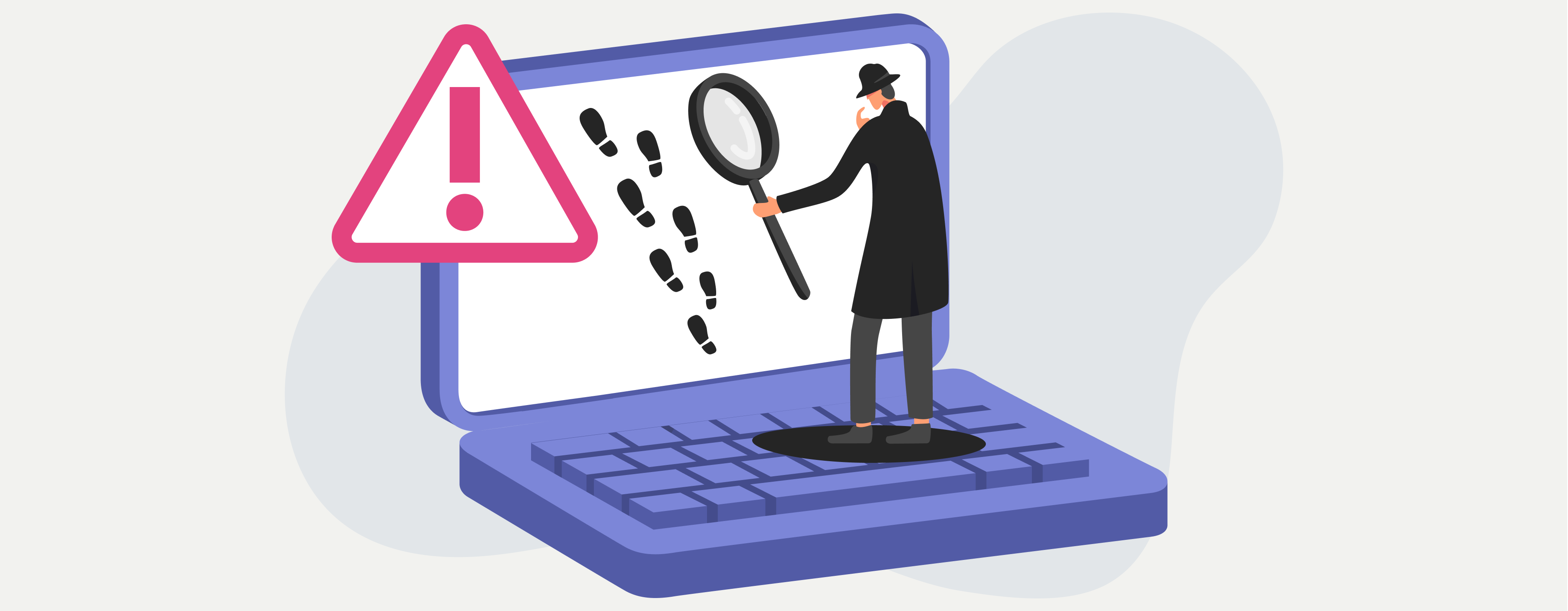We live in a world where our lives are increasingly intertwined with the digital realm and every click, share, and like leaves behind a trail of personal information. This digital footprint, while convenient and often harmless, can also make us vulnerable to a new breed of scams that thrive on the data we unknowingly share.
Your digital footprint paints a picture of your habits, interests, and even your vulnerabilities. Savvy scammers are adept at piecing together this information, using it to craft personalized attacks that can trick even the most cautious individuals.
Your Digital Trail: What You Leave Behind Online and How It’s Used Against You
Your digital footprint is kind of like a trail of breadcrumbs you leave behind as you navigate the online world. No matter what you do online, you’re contributing to a vast collection of data that paints a detailed picture of who you are, what you like, and how you behave online.
This data includes:
- Personal Information: Your name, address, phone number, email address, birth date, and other identifying details.
- Browsing History: The websites you visit, the search terms you use, and the content you interact with.
- Purchase History: The products you buy online, the subscriptions you sign up for, and the payment methods you use.
- Social Media Activity: The posts you share, the comments you make, the pages you like, and the people you follow.
- Location Data: Your IP address, GPS coordinates, and information about the devices you use to access the internet.
This information might seem harmless on its own, but when someone takes the time to analyze it, it can reveal a surprising amount about your life. Scammers know well how to collect and exploit this data to craft personalized scams, target you with tailored advertising, or even steal your identity.
For example, let’s say you frequently post about your love for a particular brand on social media. In that case, a scammer might create a fake profile pretending to be that brand and offer you a “special deal” that’s actually a phishing scam.
Or, if your browsing history reveals that you’re interested in a specific type of investment, a fraudster might contact you with a “once-in-a-lifetime opportunity” that’s actually a Ponzi scheme.
Oversharing: The Hidden Danger of a Large Digital Footprint
Nowadays, people mostly see oversharing as harmless – after all, everyone does it, especially on social media. We post about our lives, hobbies, and opinions online, often not thinking about the potential consequences. However, this seemingly harmless behavior can expose us to significant risks.
Scammers are the masters of scouring social media platforms for valuable information. Your posts about your upcoming vacation, your new car, or your recent promotion can provide them with valuable clues about your financial status, daily routines, and vulnerabilities. This information can be used to craft personalized scams tailored to your specific interests and circumstances.
For instance, if you share photos of your expensive new watch, a scammer might target you with a phishing email offering a “free” watch cleaning kit, hoping you’ll click on a malicious link. Or, if you post about your upcoming trip, a scammer might send you a message offering a “discount” on travel insurance or accommodations, leading you to a fake website that steals your credit card details.
Even seemingly mundane details, such as your birthday, pet’s name, or favorite restaurant, can be used by scammers to guess your passwords or answer security questions. It’s crucial to be mindful of what you share online and consider the potential risks before hitting that “post” button.
Minimizing Your Digital Footprint: Strategies for Staying Safe Online
In today’s hyper-connected world, it’s like we’re constantly leaving digital breadcrumbs wherever we go online. This trail of data we leave behind is our digital footprint, and it can reveal a lot about us – maybe more than we’d like.
So, how do we keep our privacy intact and stay safe in this digital landscape?
- Be smart about what we share online. Think twice before posting those vacation pics or sharing personal details on social media.
- Check the privacy settings on our accounts. You’d be surprised how much you can control who sees the stuff you share. Ideally, your social media profiles should only be visible to your friends and family, people you know and can trust.
- Watch out for public Wi-Fi. Nowadays, most of us want to be online all the time, which leads people to use public Wi-Fi without too much thought. However, while it might be convenient, it’s not always secure, so avoid using these public networks unless absolutely necessary.
- Use privacy-focused browsers and search engines. These search engines are designed to minimize tracking and keep your online activities more private. And don’t forget to clear your browser history and cookies regularly – it’s like tidying up your digital house.
- Keep your software updated. It might seem like a hassle, but those updates usually include important security patches, so it’s always smart to take the time to make sure your device is equipped with the latest security features.
Remember, your digital life is an extension of your real life, so treat it with the same care and consideration.
Final Thoughts
Taking charge of your digital footprint is a matter of being proactive and making conscious choices about what you share and how you interact online.
By implementing these strategies, you can maintain your privacy, protect your personal information, and navigate the digital world with peace of mind. Remember, the internet never forgets, but you have the power to control what it remembers about you.
